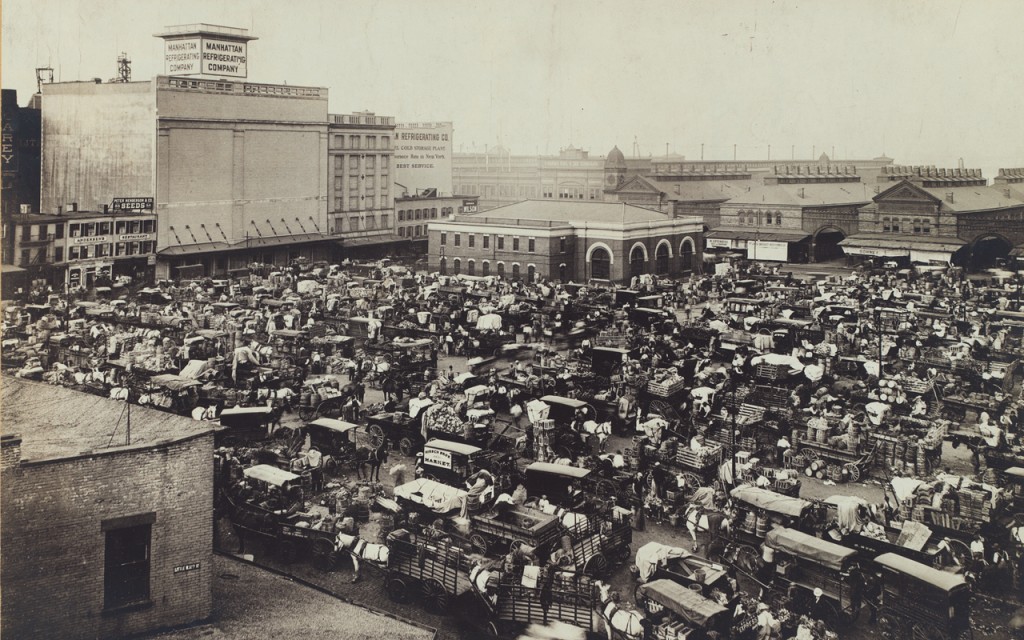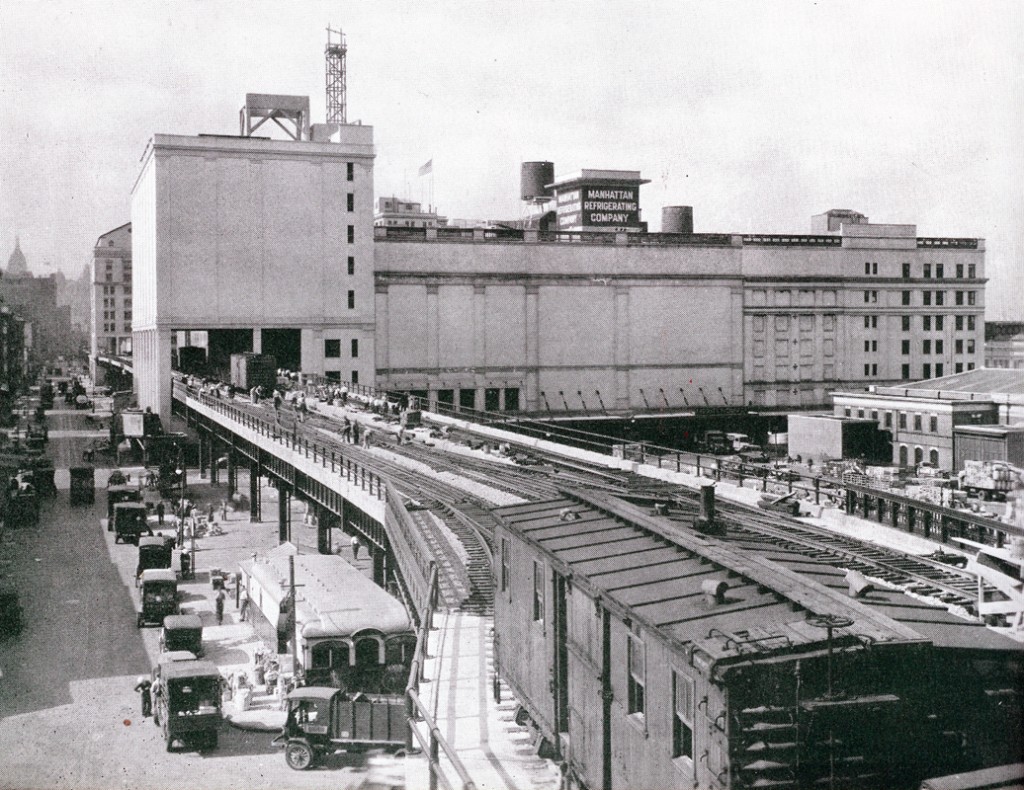Of the many additions to the revised & updated version of On the High Line, one of my favorites is a new map created by Maps For Good co-founder Marty Schnure. It uses data from the Welikia Project to show the path of an historic Native American Indian trail that once cut below today’s Gansevoort Woodland in the High Line park. (Click the image to enlarge it.)
Four hundred years ago, before the first Europeans arrived, this area was a prime hunting and fishing grounds for the Lenape people. From the estuary of the Hudson River they pulled 12″ oysters, 6′ lobsters and more than 70 species of fish. On land they hunted countless species of mammals including deer and bear.
In those days, the river was a bit closer to today’s park. We’ve been expanding the borders of our island for centuries; Marty’s map shows the original 1609 shoreline, which the High Line roughly follows. Intriguingly, the line bisects the Western Rail Yards at exactly the point where the temporary path in section three of the park will begin once it opens in the Fall. This path will lead visitors through the still-wild landscape that emerged after the rail line was abandoned, and toward a glorious view of the river — all of which takes place on modern landfill.
The second edition went on-sale this week, and continues to peel back the layers of landscape around the High Line, offering historical and cultural context for readers interested in the story of this fascinating place.
For me, the Lenape trail that passd under today’s Standard Hotel is one of the most exciting pieces of the narrative. In the early 19th century, a farmer’s market stood here; the photo below was taken in the first decade of the 20th century and shows the many stands, horse-drawn carts, and farmers that made this area one of the earliest and most important food (today we’d call it “foodie”) centers in the city. You can also see the original warehouse of the Manhattan Refrigerating Company, one of the early pioneers of modern cold-storage. This technology had a major influence on the growth of the food and shipping businesses in lower Manhattan, and helped make the High Line “the Life Line of New York” by allowing meat, dairy and produce to be quickly and efficiently moved from the freight rail line into the warehouse, where it could be stored, re-packed and shipped all over the city and region.
The photo below, from 1934, shows the expanded warehouse with the High Line now cutting through it. Today, this expansive complex is the West Coast Apartment building, and one of the many luxuries its residents enjoy are windows that offer views of the High Line. They were cut into the brick facade after the building ceased operation as a cold-storage warehouse.
If you look closely at the photo above you’ll see a classic diner on the street, another feature in the long food history of this little patch of land. In the coming months, a new restaurant will open just a dozen or so feet south of the old diner, underneath the High Line, in a very cool glass box designed by Renzo Piano Workshop. The as-yet unnamed restaurant is a partnership between Friends of the High Line and the Major Food Group, and it plans to serve a menu that reflects the neighborhood’s rich food history and the park’s long-standing commitment to sustainability. It will draw on fruits and vegetables from area farmers’ markets and rooftop gardens, and some of its meat will come from the butchers next door, who continue the long tradition of meatpacking that gave this neighborhood its name.
So from the very first footfall of the Lenape hunters, to the farmers of the Gansevoort Market, to the warehouse men of the Merchant Refrigerating Company, to the millions of neighbors and tourists who visit the High Line and the Meatpacking District every year, the trail on Marty’s map marks a well-worn path. Next year, when the Whitney Museum opens its new building next door, the path will serve yet another purpose as the newest byway on the West Side art trail.
Click here for more information about the fully updated & revised edition of On the High Line, which includes the High Line at the Rail Yards, the highly anticipated Section 3 of the park.











